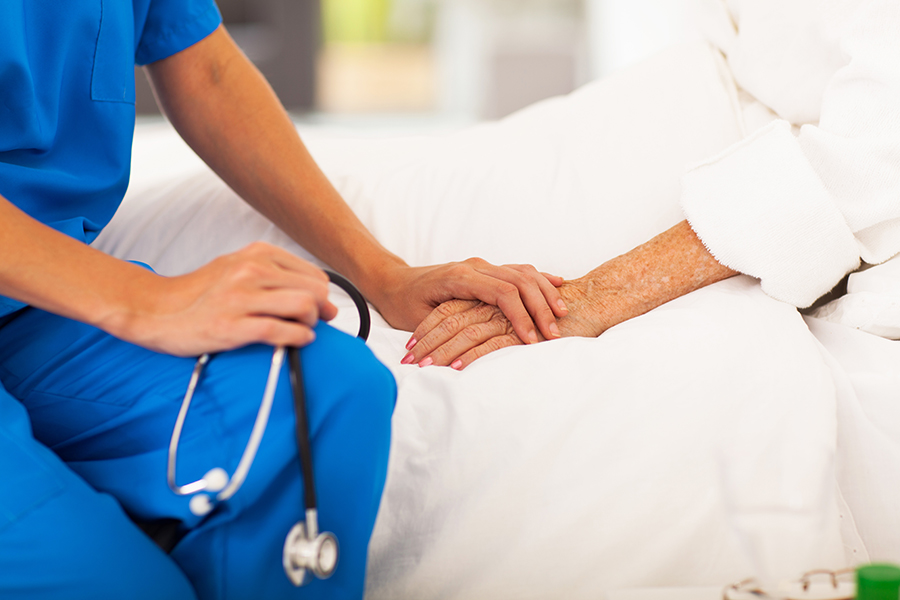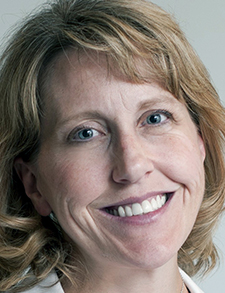
Shutterstock.com
The COVID-19 epidemic provided a stark opportunity to learn what the hospital experience was like with no visitors. Disconnection and loneliness in the hospital, however, long predate the COVID-19 epidemic and will outlast it. Rates of family estrangement are high.1 Social isolation among Americans aged 65 and older has become more common.2
Most hospitalized patients are now cared for by clinicians with whom they have no prior relationship.3 Unlike a primary care physician, who often has an established understanding of a patient’s baseline, a hospital physician must rely on multiple sources to forge their patient-clinician relationship. Review of prior records and discussion with outside physicians are key aspects of this process, but the patient interview and daily interactions on rounds are essential to relationship-building.
Unfortunately, these therapeutic relationships are difficult to establish when hospitalists have limited time to spend with patients or when patients are either delirious or unable to provide a cogent history and have no family or friends at the bedside to fill in the missing details. Patient photographs at the bedside can make a difference in caregivers and the care provided.
A patient’s photograph is a point of connection and humanization. It tells a story of a life before the current hospitalization, potentially before the current illness. It may show connections to family and friends. It provides a window into the life before now.
Studies in intensive care units (ICUs) have shown that posting photographs of patients before their critical illness increased the sense of connection nurses had to unconscious patients. These studies found that photographs brought clinicians “closer to seeing the person” and provided “a landmark bringing hope.”4 Photographs are “reminders of a patient’s pre-illness state that can enhance the empathetic bond between caregivers and patients.”5
The hospitalized patient is not necessarily in the Intensive Care Unit, but there are similarities. Generic hospital clothing and loss of privacy and dignity strip a patient of their unique humanity. Photographs that show the patient when they were well can provide a unique window into a patient’s life as well as serve clinical purposes. Photographs marking historic life events, e.g., weddings, birthdays, and holidays, can help clinicians gauge the effect and pace of illness.
The healing effect of photographs, however, extends beyond their effect on clinicians. Family pictures are a form of art,6 even if they don’t seem that way. Photographs at the bedside can bring patients a comforting and healing view, more appealing than sterile walls and drapes or room televisions stuck on a loop of news.
For some patients, photographs may be art enough, but bedside views can extend to favorite pieces of art. Both viewing and making art have therapeutic effects for patients, engaging functions of the brain7 such as creativity, curiosity, and wonder, in ways that may help with self-management of one’s illness. Art therapy8 has long been a feature of pediatric and psychiatric units but the beneficial effect of art on adult patients’ psychological health and well-being calls for expansion both to “regular” medical units and to common hospital spaces.9 Art serves to ground our shared experience in the hospital, whether it be a photograph at the bedside or a musical serenade from the hall.10
Physicians and nurses are trained to give quality care to each patient, no matter their condition, treating those who can’t communicate well with the same meticulous and empathic care as patients who are jovial and talkative.
With burnout at crisis levels, hospitals need a cost-effective way to motivate caregivers and bring them a second wind. Researchers have theorized that the better a physician knows a patient, the more likely the physician is to make decisions that are ultimately in the patient’s best interest.11 If we want the best care possible from our physicians for ourselves and our loved ones, we must find ways to strengthen the connections between patients and their clinicians—the more connections we can make, the better.
The process of bringing photographs to the bedside need not add to the expense and work of caring for patients in the hospital.12 As patient communication boards evolve beyond markers on a whiteboard, hospitals should capitalize on new technology, including digital whiteboards.13 Digital boards allow family and friends, with the use of a code and login, to personalize a patient’s space, uploading photos and art without adding to the work of weary clinicians. In the face of an ongoing pandemic, social isolation, and family estrangement, photographs and art at the bedside can bring both hope and healing to patients and caregivers. They are necessary investments in health.

Dr. Cooper
Dr. Cooper is a member of the core educator faculty for the department of medicine at Massachusetts General Hospital and an assistant professor of medicine at Harvard Medical School in Boston.
References
- Atlas, G. Op-Ed: 1 in 4 adults are estranged from family and paying a psychological price. Los Angeles Times. https://www.latimes.com/opinion/story/2021-11-28/1-in-4-adults-is-estranged-from-family-and-paying-a-psychological-price . Published November 28, 2021. Accessed August 14, 2022.
- National Academies of Sciences, Engineering, and Medicine; Division of Behavioral and Social Sciences and Education; Health and Medicine Division; Board on Behavioral, Cognitive, and Sensory Sciences; Board on Health Sciences Policy; Committee on the Health and Medical Dimensions of Social Isolation and Loneliness in Older Adults. Social Isolation and Loneliness in Older Adults: Opportunities for the Health Care System. Washington, DC: National Academies Press; February 27, 2020. Available at: https://www.ncbi.nlm.nih.gov/books/NBK557974/. Accessed August 14, 2022.
- Gesensway, D. Could you drag PCPs back to the hospital? And would you even want to? Today’s Hospitalist. April, 2015. Available at https://www.todayshospitalist.com/could-you-drag-pcps-back-to-the-hospital-and-would-you-even-want-to/. Accessed August 14, 2022.
- Andersson M, et al. Patient photographs—a landmark for the ICU staff: a descriptive study. Intensive Crit Care Nurs. 2013;29(4):193-201. doi: 10.1016/j.iccn.2013.04.002.
- Neto C, et al. Critical care nurses’ responses to patient photographs displayed at the bedside. Heart Lung. 2006;35(3):198-204. doi: 10.1016/j.hrtlng.2005.11.004.
- Schwendener, M. Blood unsimple: the ties that bind, in all their complexity. The New York Times. February 20, 2007. Available at https://www.nytimes.com/2007/02/20/arts/design/20port.html. Accessed August 14, 2022.
- Pupánová, B. A neuroscientist reveals the profound real-world benefits art has on our brains. Eduart Experience. https://www.eduartexperience.com/en/art-stories/art-world/a-neuroscientist-reveals-the-profound-real-world-benefits-art-has-on-our-brains/. Published March 6, 2021. Accessed August 14, 2022.
- Kaimal, G. How art can heal. American Scientist. 2020;108(4):228. doi: 10.1511/2020.108.4.228
- Wecker, Menachem. ‘Fine art is good medicine’: how hospitals around the world are experimenting with the healing power of art. Artnet. https://news.artnet.com/art-world/how-hospitals-heal-with-art-1606699. July 29, 2019. Accessed August 14, 2022.
- McCarthy, C. Mass General’s ‘virtual bedside concerts’ bring healing power of music to isolated patients. Boston 25 News. https://www.boston25news.com/news/health/mass-generals-virtual-bedside-concerts-bring-healing-power-music-isolated-patients/PQSFVYP3F5DJBOPGYVLDE2BTAE/. Published December 2, 2020. Accessed August 14, 2022.
- Stevens JP, et al. Comparison of hospital resource use and outcomes among hospitalists, primary care physicians, and other generalists. JAMA Intern Med. 2017;177(12):1781–1787. doi:10.1001/jamainternmed.2017.5824.
- McCarthy, C. Local nurse prints family photos for patients’ bedsides during coronavirus no-visitor policy. Boston 25 News. https://www.boston25news.com/news/health/local-nurse-prints-family-photos-patients-bedsides-during-coronavirus-no-visitor-policy/74KCE72SVJGRHFQDRWGTCK2Q34/. Published April 17, 2020. Accessed August 14, 2022.
- Winberg, A. Guest column: Digital whiteboards now outshine marker boards in all areas including costs. Health IT Outcomes. https://www.healthitoutcomes.com/doc/digital-whiteboards-now-outshine-marker-boards-in-all-areas-including-costs-0001/. February 19, 2019. Accessed August 14, 2022.